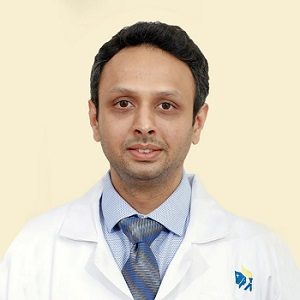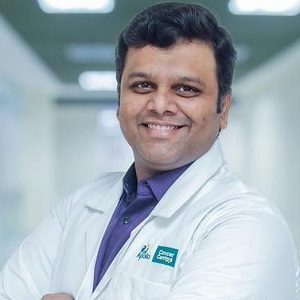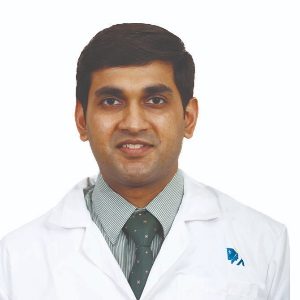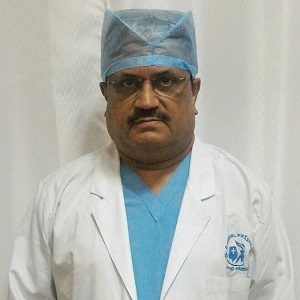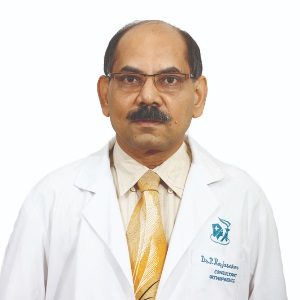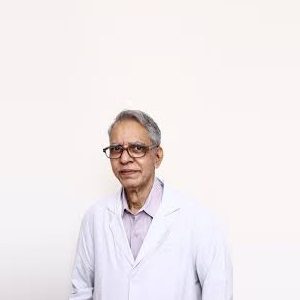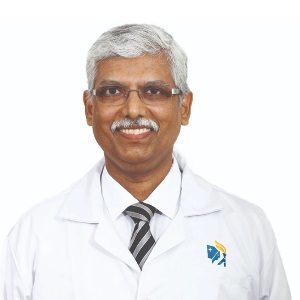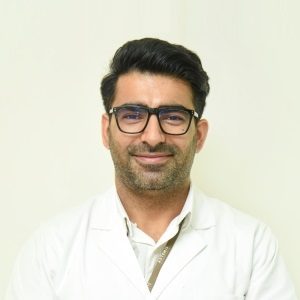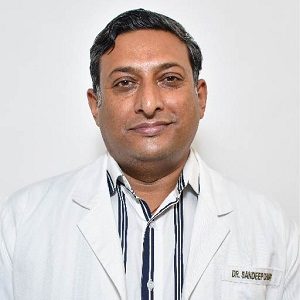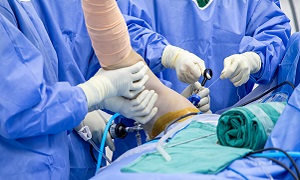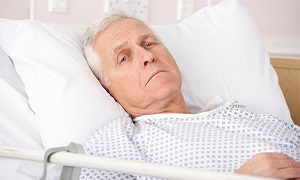Best Bankart Repair Surgery Doctors in India
- Orthopedic Surgeon, Chennai, India
- Over 12 years’ experience
Profile Highlights:
- Dr. Kunal Patel consults on Orthopedics related problems at the Apollo hospitals of Chennai.
- He was part of the team which set Limca’s World record of Highest Joint Replacement Surgeries in March 2015.
- Dr. Kunal Patel is well-trained in Asia’s first and only Brainlab Arthroplasty Computer Navigation Orthopedic suite and has completed several fellowships related to his field.
- Orthopedic Surgeon and Spine Surgeon, Chennai, India
- Over 12 years’ experience
Profile Highlights:
- Dr. Madhu Kiran Yarlagadda is an orthopedics – consultant specializing in Joint and spine surgery and works at the Apollo hospitals of Chennai.
- Dr. Madhu Kiran Yarlagadda’s team carried out Robotic Spine Surgery for the first time in South-East Asia and performed Endoscopic Transforaminal Spine Surgery in Chennai.
- He treats spine diseases and has the facilities and expertise to perform robotic spine surgery. Along with that, he treats patients with joint and other orthopedic issues.
- Orthopedic Surgeon, Chennai, India
- Over 16 years’ experience
Profile Highlights:
- Dr. Arun Kannan is a well-known joint replacement surgeon at the Apollo Hospitals, Chennai.
- In his 16 years of experience doing joint surgeries and treating orthopedic issues, Dr. Arun Kannan has worked in the US as well as India and has gained enough trust and recognition from his patients.
- He has been excellent in his academics as well as practice because of which he received prizes and appreciation in both.
- Orthopedic Surgeon, Chennai, India
- Over 40 years’ experience
Profile Highlights:
- An Orthopedic doctor by profile, Dr. Gopala Krishnan has around 40 years of experience in his field.
- After his initial studies in medicine in Chennai, Dr. Gopala Krishnan moved to the US to pursue M.Ch in Orthopedics in 1984.
- His experience and dedication have helped him gain recognition in the field and build trust among patients.
- Orthopedic Surgeon, Chennai, India
- Over 24 years’ experience
Profile Highlights:
- Dr. Rajasekar P is an experienced orthopedist with 24+ years of experience.
- He treats and consults patients with problems with Joints, fractures, osteoporosis, Spine injuries, etc.
- He is an MBBS and DNB qualified doctor and practices at Apollo hospitals of Chennai.
- Orthopedic Surgeon, Chennai, India
- Over 50 years’ experience
Profile Highlights:
- Dr. Uma Chandran S specializes in orthopedics and is a veteran surgeon at Apollo Hospitals of Chennai.
- He has spent more than 50 years in the field of orthopedics and is believed to be one of the best orthopedists in Chennai.
- He is also known for his expertise in bone replacement surgery, spine movement, fracture treatment, etc.
- Spine Surgeon and Orthopaedic Surgeon, Chennai, India
- Over 18 years’ experience
Profile Highlights:
- Dr. Muralidharan Venkatesan is a consultant in spine surgery from Chennai.
- He provides comprehensive cervical (neck), thoracic (upper back), and lumbosacral (lower back) conditions treatment.
- Dr. Venkatesan pursued MBBS, MRCS, and a fellowship FRCS and shifted his specialization to spinal surgery.
- Dr. Venkatesan has his papers published in several journals.
- Orthopedic Surgeon and Spine Surgeon, Chennai, India
- Over 23 years’ experience
Profile Highlights:
- Dr. Ravi Venkatesan is a spine surgery specialist from Chennai, Tamil Nadu.
- His experience in spine surgery, orthopedics, and spine deformity surgery date back nearly 23 years.
- Dr. Venkatesan has performed several surgeries and has been an active member of various orthopedics groups.
- Many organizations have recognized his service and have awarded him for his dedication.
- Orthopedic Surgeon, Gurugram, India
- Over 10 years’ experience
Profile Highlights:
- Irfan Banday is a brilliant young orthopedic surgeon with over 10 years of experience handling trauma surgeries and ortho problems.
- Irfan received Fellowship in Knee Arthroscopy and Arthroplasty and Shoulder and Upper Limb Arthroscopy, Arthroplasty & Reconstructive Surgery.
- He manages simple & complex fractures, Reconstructive Surgeries of the Knee, Shoulder, Upper limb, and complex tendon transfers.
- Orthopedic Surgeon, Gurugram, India
- Over 18 years’ experience
Profile Highlights:
- Sandeep Chauhan is one of the best orthopedic surgeons and an expert in managing complex fractures, even in children, soft tissue injuries, septic arthritis, and osteomyelitis.
- He performs fracture reconstructions; and arthroplasty procedures like surface replacements, cemented and un-cemented THR, Total Knee Replacement, musculoskeletal infections, UKA knee, hip, shoulder, & elbow replacements.
Best Bankart Repair Surgery Hospitals in India
Bankart Repair Surgery
The Bankart Repair Surgery is often recommended by a doctor in case of a shoulder dislocation or instability in order to repair or restore proper functionality of the shoulder joint. Doctors usually prefer the Arthroscopic approach, a minimally invasive procedure which means only a small surgical incision is made to diagnose and rectify the shoulder joint problems.
Primary cause of shoulder pain
The shoulder primarily contains three bones, namely,
- The clavicle or collarbone
- The scapula or the shoulder blade
- The humerus or the upper arm bone
The shoulder joint is cushioned by articular cartilages, soft tissues, rotator cuff and labrum. Disruption, damage or tear in any of the above including muscle or cartilage wear and tear caused due to old age may be the primary cause of pain. During arthroscopic surgery, doctors insert a small device attached to a camera into the shoulder to determine the exact cause of pain.
What are the symptoms of shoulder injury?
- Excessive pain in shoulder joint
- Pain in the upper arm
- Stiffness and restricted movement in shoulder joint
- Insomnia caused by pain and stiffness
- Swelling and redness around the shoulder area
Investigations & surgery decision
At the initial stage of diagnosis, doctors usually recommend basic physical examinations, such as Anterior Apprehension Test or Load and Shift.
Other diagnosis treatments may include X-rays, MRI or MRA. The treatment methods recommended are in the form of physical activity, physiotherapy and medicines. If the shoulder pain remains persistent or unresponsive despite the alternative treatments, doctors recommend Arthroscopic Bankart Repair Surgery as a diagnosis and treatment method.
Benefits of Arthroscopic Bankart Repair Surgery
The Arthroscopic approach to Bankart Repair Surgery is often preferred over alternative treatment methods due to its many advantages, some of which are
- Less surgical morbidity
- Reduced surgical costs
- Short-term rehabilitation
- Reduced postoperative pain
- Improved cosmesis
How is the Arthroscopic Bankart Repair Surgery performed?
Bankart Repair Procedure
The Arthroscopic Bankart Repair Surgery focuses on the labrum, which is a cartilage band attached to the glenoid bone in our shoulders. The main aim of the surgery is to provide comfort from the progressive pain along with proper functioning of the shoulder to allow patients to perform day-to-day basic activities without pain or discomfort.
Preparation for the surgery
- Your doctor will help you out with a dietary chart of what to eat or drink and what to avoid before and after your surgery. Make sure you strictly adhere to the dietary regulations set by your doctor.
- Bring all your necessary medical documents including blood test results, X-ray reports and scans and hand it over to the healthcare professional.
- Please ensure you have a family member or a friend accompanying you for the procedure and helping you with your ride back home.
The surgery
Insertion of Arthroscope
The surgeon initiates the surgical process with a small incision made at the front of the shoulder and another one at the back of the shoulder. A small video camera also known as an arthroscope is inserted through the incision to view the inside of the joint post which small surgical instruments are inserted to further the procedure.
Prepping the Area
Once the surgeon gets a clear shot, the area around the labrum is thoroughly cleaned by the surgeon, ensuring no loose particles or sharp edges remain.
Placement of Anchors
The next step is to drill small holes in the bone where anchors are placed. These anchors are used to hold the sutures in place around the glenoid.
Re-attachment of Labrum
While the anchors hold the sutures in place, the surgeon attached the labrum to the sutures and pulls the sutures tightly in order to reattach the labrum to the glenoid.
The surgery ends with the incisions being cleaned and covered and the patient is usually put in a sling post-surgery for recovery at the initial stages.
Hospital stay and recovery time
The surgery procedure takes about 1-2 hours and a minimum 24hr hospital stay is needed to monitor your recovery rate post which you are free to go home. The initial recovery phase is estimated to be 3-6 weeks wherein doctors advise patients to wear an arm sling for protection and safety reasons. The following recovery phase starting from 4-8 weeks after the surgery is focused on flexibility of movement. However, the total recovery time may vary from 4 or 6 months to 1 to 2 years after the surgery.
Post-surgery precaution & care
Apart from the follow-ups and the prescribed medicines, you will be asked to actively participate in proper precaution and care after your surgery for a quick and steady recovery.
Points to keep in mind
- Please wear your sling for at least 3-6 weeks from the date of your surgery and only remove the sling on your doctor’s approval.
- You should routinely remove the sling for time to time at least thrice each day to stretch or straighten the elbow. This is important to avoid stiffness or joint lock.
- Do not apply ointments, creams or wet tissue/ dressing on the wound unless advised otherwise by their doctors.
- You should ask your doctor for approval before showering post-operation and even when you do, you should strictly avoid scrubbing or spraying the wound area. Gently pat it dry, preferably with an antiseptic cotton pad and air-dry it before putting the wound dressing back on.
- You should strictly avoid any form of heavy physical work, especially something that has to do with elbows, arms or lifting for at least 4-6 months from your operation.
- Ask your doctor or healthcare professional for a detailed diet list including restrictions such as no smoking or no alcohol clearly mentioned and then strictly abide by it.
FAQs
What is a Bankart tear?
Shoulder dislocation may cause a tear in the shoulder cartilage which is commonly known as the labrum. This tear in the labrum is commonly known as Bankart tear and can be fixed through the Bankart Repair surgery.
How long do I have to wait to return to work after surgery?
Returning to work after surgery depends on a lot of variable factors like the type of job you do, the amount of physical exertion you might face at the job, your body’s reaction and recovery rate and more. Doctors usually advise taking 2 weeks off work if you have a job that requires no physical activity.
When can I begin physiotherapy?
You can start with your physiotherapy within a week or two of your surgery.
What happens if I’m not feeling well after surgery?
Call your surgeon or family doctor, if you’re experiencing any of the below-
- Increased pain and swelling
- Pussing or leaking from your wound
- High fever and constant nausea
- Inability to pass urine for more than 8-10 hours

